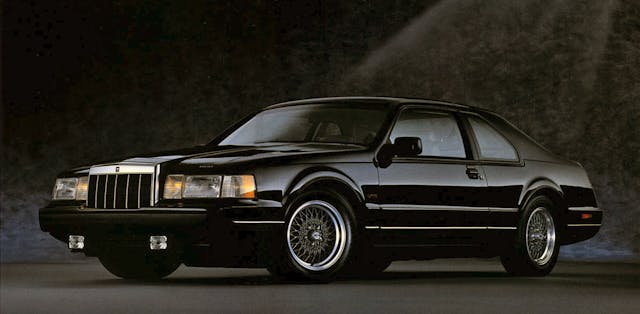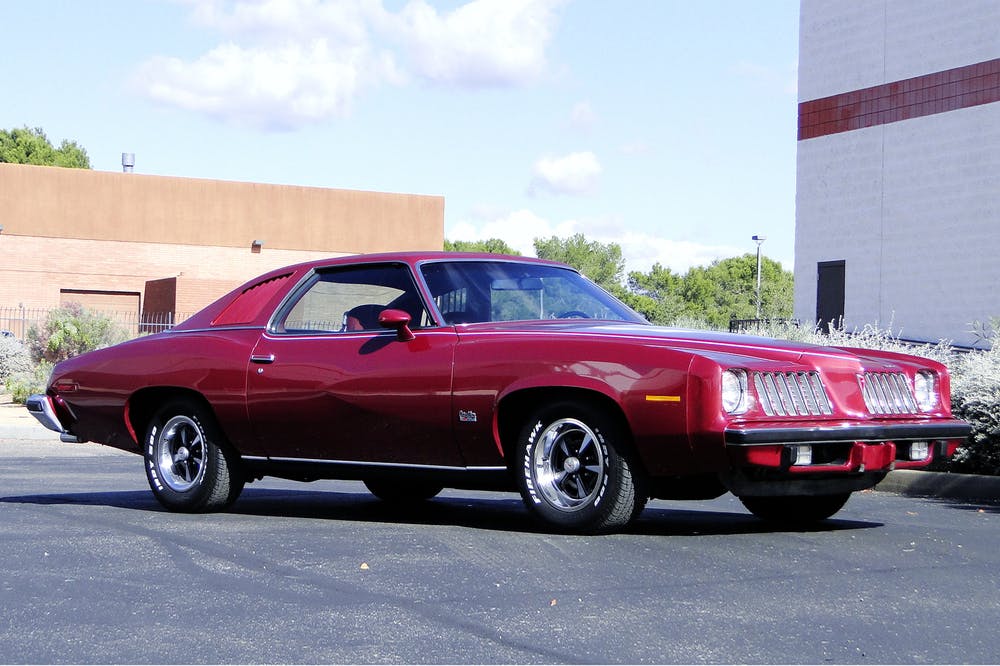9 Big Winners from the Big Three in the Latest Price Guide
As the weather gets hotter and driving season is now in full swing across North America, the collector car market continues to cool off. That doesn’t mean all classic cars are getting cheaper, though, as a lot of them started this year with significant appreciation. We surveyed the vehicles from the Big Three (GM, Ford, and Chrysler) in the Hagerty Price Guide, and below are the ones that have seen the biggest rise in values so far in 2024.
1979-93 Ford Mustang: +15 percent

Third generation, aka “Fox-body” Mustangs have been getting pricier for over a decade now, and kept right on going through the first part of 2024. A 15 percent bump in a quarter is remarkable, and so is the 258 percent surge in average Fox-body values over the past 10 years.
A big part of the Mustang’s appeal is that there’s one for most budgets, and that’s still the case with Fox-bodies despite the big numbers above. Condition #2 values for this generation of America’s pony car range from $13,000 for some of the humble early cars to over 100 grand for high-spec Saleens and SVT Cobra Rs.
1983-92 Lincoln Mark VII: +15 percent

The love for Ford’s Fox platform isn’t limited to Mustangs. In total, 15 different FoMoCo vehicles rode on the Fox chassis, and one was the Lincoln Continental Mark VII, renamed Mark VII for 1986. The 1985 LSC model was the first American car with four-channel antilock brakes, and the combination of reliable 302-cubic inch V-8 with Lincoln luxury made it a decent seller. Maybe it’s a case of the Mustang’s rising tide lifting all Fox-platformed boats, but the Mark VII’s growth isn’t limited to 2024. Since 2021, this car has more than doubled in value, with current #2 prices ranging from $22,000 to $24,500.
1999-2004 Ford SVT Lightning: +18 percent

The 1993 F-150 SVT Lightning was Ford’s original sport truck, and alongside the ’93 Mustang SVT Cobra, it introduced the buying public to Ford’s Special Vehicle Team. Ford retired the Lightning name in 1995, but brought it back on the 10th generation F-Series platform for 1999. Whereas the original Lightning used the tried-and-true 351 Windsor, the 1999 Lightning used an Eaton supercharged 5.4-liter Triton engine good for 360 hp (up to 380 from 2001). MSRP for the 1999 Lightning came in at $29,355 (about $55,800 when adjusted for inflation) when the regular F-150 XL V8 listed from $16,015, and Ford sold over 28,000 units of the boosted pickup from 1999-2004. When adjusted for inflation, then, Lightnings haven’t quite caught up to their original price unless they’re in #1 (“best in the world”) condition.
1965-68 Plymouth Fury/VIP: +11 percent

Plymouth’s fourth-generation Fury rode on Chrysler’s new, full-size C-body platform and was available in a wide range of body styles, engine configurations and trim levels, including a luxury version called the Plymouth VIP. Given the wide range of equipment and body styles, Fury values have a broad range as well, from under 13 grand for a 318-powered Fury I sedan to over 100 for a Hemi-powered Sport Fury. Prices have moved differently among the various body styles: Most convertibles and sedans have actually moved down about three percent, while two-door sedans and hardtop coupes are up 20 percent since January.
1965-68 Dodge Polara: +9 percent

Also built on the full-size C-body platform and available with a wide range of engines, body styles, and trims, the third generation Polara similarly has a wide range of values that move differently from each other. And, like the Fury, it isn’t the first name in American muscle despite being available with big V-8s, including 440s and Hemis. While most versions haven’t moved at all, convertibles are up 15 percent since the beginning of the year.
1984-2001 Jeep Cherokee XJ: +10 percent

Introduced for 1984, the XJ-generation Jeep Cherokee was Jeep’s first all-new design since the 1960s as well as the first with unibody construction. This proto-SUV was so popular that when Chrysler bought the Jeep brand from AMC in 1987, it retained the XJ and kept on building it until 2001. That’s an impressive run, and XJs are still in demand. Their #2 values are up by 10 percent across the board so far this year, and have more than doubled over the past five years.
1973-75 Pontiac Grand Am: +16 percent

Pontiac debuted the Grand Am model in 1973 as a sort of mix between the luxury-oriented Grand Prix and the sporty Firebird Trans Am. Built on the GM A-body platform, the “mid-sized Pontiac with Foreign Intrigue…American Ingenuity” (according to the ads) was available as a 2-door colonnade or 4-door “pillared” hardtop, and adorned with the massive beak found on most ’70s Pontiacs.
Introduced after the golden age of muscle was already over, the first-gen Grand Am is like many ’70s American cars in that it isn’t very expensive and its prices historically haven’t moved much. They started getting pricier in 2020, however, and have started the year with a 16 percent gain on average.
1961-63 Oldsmobile F-85 Cutlass: +13 percent

Olds used the Cutlass name on a 1954 Motorama show car, but it didn’t reappear until 1961, with the introduction of a deluxe coupe version of the all-new F-85 “senior compact.” It came with a 215-cubic inch aluminum V-8, similar to the Buick engine that went on to become the famous Rover V-8. The Cutlass-based 1962 Oldsmobile Jetfire was also the first production car offered with a turbocharger.
F-85 values were flat for most of the 2010s and didn’t move dramatically during the earlier part of this decade. Convertible models and Jetfires are also flat so far this year, but all other trims (F-85 and F-85 Cutlass) and body styles (coupe, sedan, and station wagon) are up 20 percent since January.
1973-77 Chevrolet Monte Carlo: +30 percent

The redesigned ’73 Monte Carlo was a big success for Chevrolet. Motor Trend named it their “Car of the Year,” and the Monte helped the company set a sales record that year. New features like standard radial tires, wrap-around interior styling, and one-piece swiveling bucket seats helped the Monte Carlo lead the parade of entries in America’s personal luxury car market. Through several restyles and despite shrinking engines and power figures, the second-gen Monte remained a sales juggernaut through its five-year production run.
These cars shot up in price starting in 2022, and #2 values are up a whopping 82 percent over the past two years.
***
Check out the Hagerty Media homepage so you don’t miss a single story, or better yet, bookmark it. To get our best stories delivered right to your inbox, subscribe to our newsletters.



Fox bodies have been under value for a long time. The lightning is a special interest limited volume. The Monte is of interest as everything else is way over priced in the Chevy coupe line.
The rest are cars that just never had much value so any movement can be large.
The Mark VII is an attractive car as shown here in black LSC form. I’d look for one that already had the ‘always at the dealer’ air suspension swapped over to standard coil if possible. What about those early -‘Continental ‘ – Mk VIIs with the BMW sourced turbo diesels? Can’t imagine there are many of those left and as an oddball collectors piece maybe? This Polara would probably be my choice as an investment and as a driver. It has a certain shabby chic quality that I can imagine gaining ground in the future. But then I’m a sucker for a ragtop and the robins egg blue is not too Petty blue…too.
Oh no, the secret’s out on the Grand Am! When I was 16 Mom brought home a new ’73 GA. She chose the color she liked and didn’t notice that the car had a 455 and every speed part Pontiac could add on. With 500 ft/lbs of torque, it was a tire-melting monster, The drivetrain from the Trans Am, the interior from the Grand Prix, and the body from the LeMams. It was to be the next GTO, The drawings showed it as a GTO. I have 3 now. Black 455, orange 400, and a silver 455. I was hoping to keep them a secret. The car showed up again in ’77 as a Can-Am but no 455 this time.